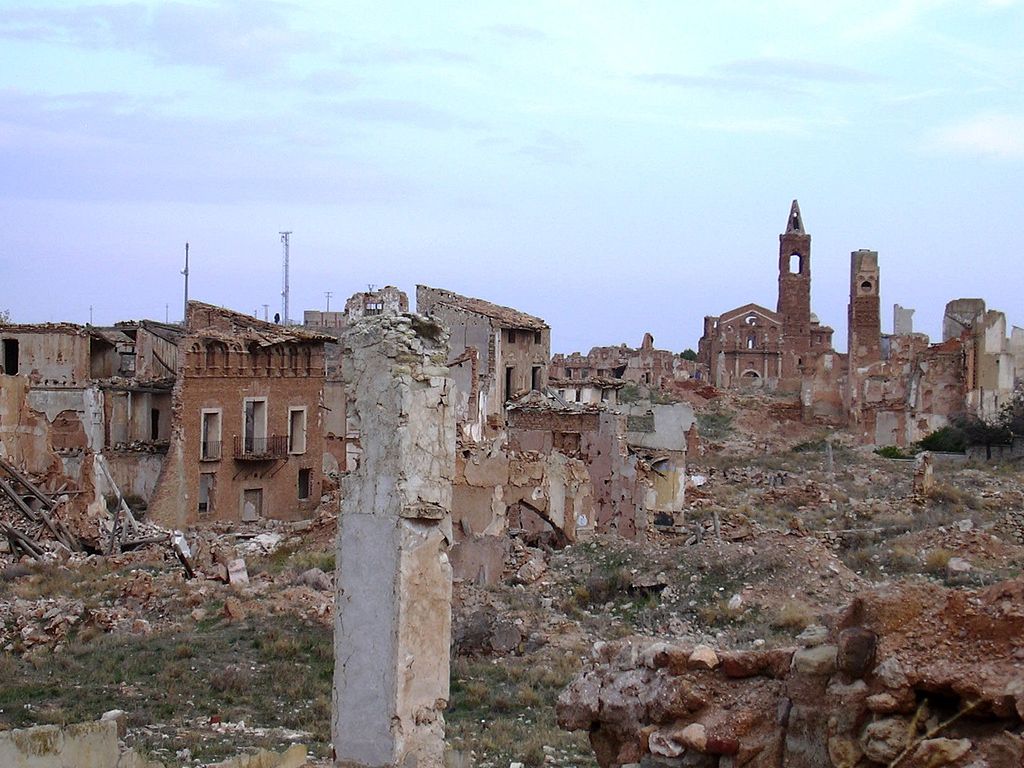Archaeological excavations in the Belchite cemetery (Zaragoza) reveal two graves with a civilian population killed during the Civil War. One of large cavities has already shown 15 bodies and could contain up to 150.
Promoted by the Mariano Castillo Association for the Recovery of the Democratic Memory of Belchite and financed by the central and Aragonese governments, the project is co-directed by the anthropologist José Ignacio Lorenzo, the archaeologists Gonzalo García, Sergio Ibarz and Hugo Chauton and the restorer Eva Sanmartín. They have the collaboration of volunteers and historians.
Belchite scene of Falangist repression
Barely two days after the coup by Franco’s troops (on July 18, 1936), the town of Belchite suffered the first repression by Falangists. They ended the lives of about 150 people who are believed to be the ones who occupy that first grave. El País reported the discovery today (25th October).
The president of the Association for the Recovery of the Democratic Memory of Belchite, José Vidal, points out that of those 150 murdered “there is specific documentation”. He further added that the number shot during the Civil War in Belchite would amount to some 400 people, 325 from the town and the rest of other surrounding municipalities such as Mediana or Fuendetodos. Mass murders that were not only carried out in the month of August and the last days of July, but also in 1938 after the capture of the town by the rebellious troops.
After July 18, the town was in the hands of the coup plotters, but between August and September 1937 the famous Battle of Belchite took place. It was won by the Republicans, who took the town. The following year, in 1938, the Francoists definitively recovered the municipality.
Numbers verified by confession
It is verified that in the first month after the coup d’état they murdered 300 civilians. Further during the first weeks of the uprising 150 were killed. This is known due to the confessions the undertaker made in September ‘37 after the recovery of the municipality by the republican troops. He personally ended the lives of 50. A “cruelty” that the anthropologist acknowledges has not occurred in other localities other than Zaragoza.
The work began on September 30 with the first soundings in two areas previously delimited by geo-radar. A subsequent electromagnetic survey detected pistol and rifle casings and rifle bullets. Once the machine stripping began, “certain bone remains” began to appear that did not keep the canonical position of burial with the hands on the chest but “it was noticeable that they were lying”.
The bodies show “major violence”
Gonzalo García said the bodies denote “significant violence”. One of them has appeared bound hand and foot, face down and shot in the skull. As an archaeologist, he stressed the importance of the find to “uncover” facts in history that “have been hidden or have not been seen.” For Sergio Ibarz, the novelty is the high number of bodies located and that they appear intermingled; a sign of the reprisals in a municipality “symbol” of the fierce Civil War.
The bodies so far occupy two cavities, one on which they threw lime. They present poor conservation due to the clays with salts of the soil and the humidity. Some have fragmented skulls, since stone blocks were thrown over a pit, the anthropologist explained. According to Lorenzo, several young women have appeared among the fifteen bodies. One was a minor under 18 years of age. All, except for one of the girls who wore rubber-soled slippers, were barefoot. Similar finds have not been detected in other graves.
Men and women between their twenties and forties
“Dramatic and forceful” testimony of what the coup d’état entailed highlights the importance of this find. We need to know “the reality of what happened on that date as of July 18, 36”.
This battle led to the destruction of the town and ended its social, economic and business fabric due to the emigration of many families. Of the murderers, no one is left alive. They “went on a roster” and “lived peacefully” among the families of those who had murdered.


